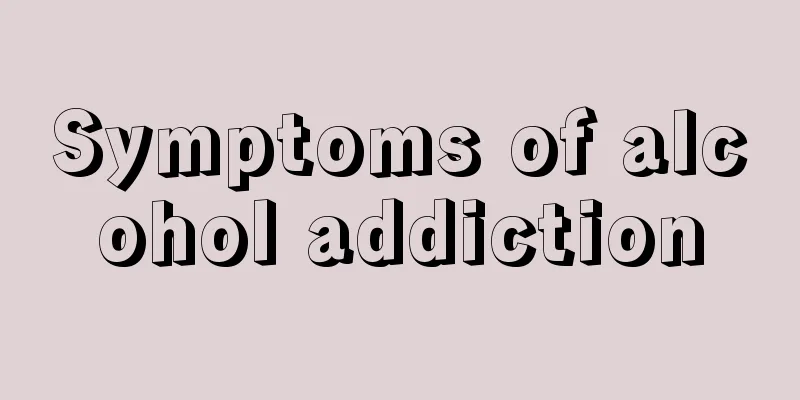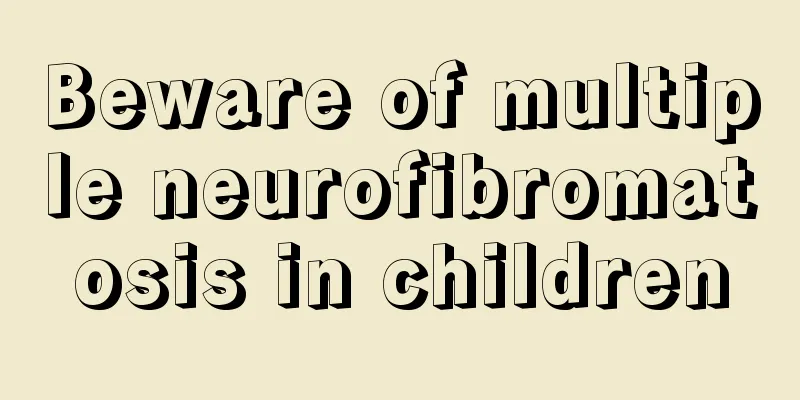Symptoms of alcohol addiction

|
Although alcohol has become a popular drink now, due to its effect of paralyzing the brain nerves, many people choose to drink excessively in pursuit of the pleasure after the paralysis. However, alcohol is not a bad thing. Drinking in moderation can be good for your health, but excessive consumption can lead to dependence of nerve cells, which is what we often call alcohol addiction. So what are the specific manifestations of alcohol addiction? If you sincerely want to quit drinking but find that you cannot quit completely; or if you have difficulty controlling the amount of alcohol you drink and always get drunk; or if you don’t like the taste of alcohol and drink heavily in pursuit of the intoxicated and erratic feeling it brings. Then you may be suffering from alcohol dependence. Alcohol dependence does not necessarily mean drinking every day. Main manifestations 1. Alcohol dependence syndrome is a special psychological and physiological state caused by repeated drinking. The patient has a craving for alcohol and a compulsive need to drink alcohol, which may occur continuously or intermittently. If drinking is stopped, psychological and life withdrawal symptoms will appear. The syndrome has the following clinical characteristics: ① An uncontrollable craving for alcohol; ② A fixed drinking pattern, in which the patient must drink at fixed times regardless of the occasion in order to avoid or relieve withdrawal symptoms; ③ Drinking has become the center of all activities, to the point of significantly affecting work, family life, and social activities; ④ Tolerance gradually increases, and the patient needs to continuously increase the amount of alcohol consumed in order to achieve the effects achieved in the early stages of drinking or to prevent the occurrence of physiological withdrawal symptoms; ⑤ Withdrawal syndrome recurs. If the patient reduces the amount of alcohol consumed or prolongs the interval between drinking, the alcohol concentration in the body will drop, resulting in withdrawal syndrome. The most common symptoms are tremors in the hands, feet, limbs and trunk, ataxia, irritability, and easy startle reaction; sweating, nausea and vomiting may also be seen. 2. Delirium tremens: After long-term drinking, if the patient suddenly reduces the amount of alcohol or stops drinking, he or she may quickly develop a brief loss of consciousness. During an attack, the patient is unconscious, has confusion about time and place, and has vivid and distinct hallucinations and delusions of persecution; thus, he or she may manifest extreme fear, anxiety, or impulsive behavior. At the same time, the patient may experience coarse tremors in the limbs and ataxia, and is often accompanied by fever, sweating, tachycardia, increased blood pressure and dilated pupils. In severe cases, it can be life-threatening. The duration of delirium tremens varies, usually 3 to 5 days. After recovery, the patient may partially or completely forget the course of the illness. 3. Alcoholic hallucinations, which is a hallucination state caused by long-term drinking. The patient will experience a large number of vivid hallucinations, mainly hallucinations, within 1 to 2 days after suddenly reducing or stopping drinking. Primitive visual hallucinations and commentary and commanding auditory hallucinations are common. On the basis of hallucinations, fragmentary delusions and corresponding tension, fear or depression may also occur. During the illness, the patient's consciousness was clear, and there were no obvious symptoms of psychomotor excitement and autonomic hyperfunction. 4. Alcoholic delusion: the patient experiences jealousy delusions and persecution delusions while being conscious, with the former being more common in clinical practice. The patient unreasonably suspects his or her spouse of infidelity, to which he or she often reacts with rage, which may also lead to attacks on the person of suspicion or the spouse, sometimes resulting in murder. In the past, it was also called alcoholic jealousy. 5. Alcoholic encephalopathy This is the most serious psychiatric state of chronic alcoholism, and is the result of organic brain damage caused by long-term and heavy drinking. The main clinical features are delirium, memory loss, dementia and personality changes, and most patients cannot fully recover to normal. |
<<: Is it good to be able to drink without getting red in the face?
>>: What are the hazards of plastics when exposed to high temperatures
Recommend
What are the common examination methods for prostate cancer
Prostate cancer is a malignant tumor and a diseas...
How to clean nipples before breastfeeding
Many mothers always like to clean their nipples b...
What are the early symptoms of liver cancer? Three early symptoms of liver cancer
Liver cancer is a malignant tumor that occurs in ...
Effective ways to prevent cardia cancer in daily life
Cardiac cancer is a malignant tumor caused by man...
The early symptoms of liver cancer may include body joint pain
The early symptoms of liver cancer may include bo...
What are the symptoms of goiter
Goiter is not uncommon, and the occurrence of the...
There is a swelling on the left side of my neck
Many people don't pay much attention to the s...
What are the symptoms of skin cysts
No matter what age we are, no matter whether we a...
How to solve the problem of family education for teenagers?
When children reach adolescence, they are most li...
How long can you live after having your uterus removed for malignant cervical cancer
In our lives, we often ignore our own health prob...
How can we accurately diagnose liver cancer? Introduction to the correct method of early diagnosis of liver cancer
In the current situation of the disease, there ar...
Diagnosis of laryngeal cancer
Laryngeal cancer accounts for about 1% to 2% of a...
What would look good under a sweatshirt?
As soon as autumn and winter arrive, it seems to ...
How to recover quickly after a sternum fracture
When it comes to sternum fracture, many people do...
Precautions for enema, what diseases are not suitable for enema
Enema is the process of injecting medicine into t...









